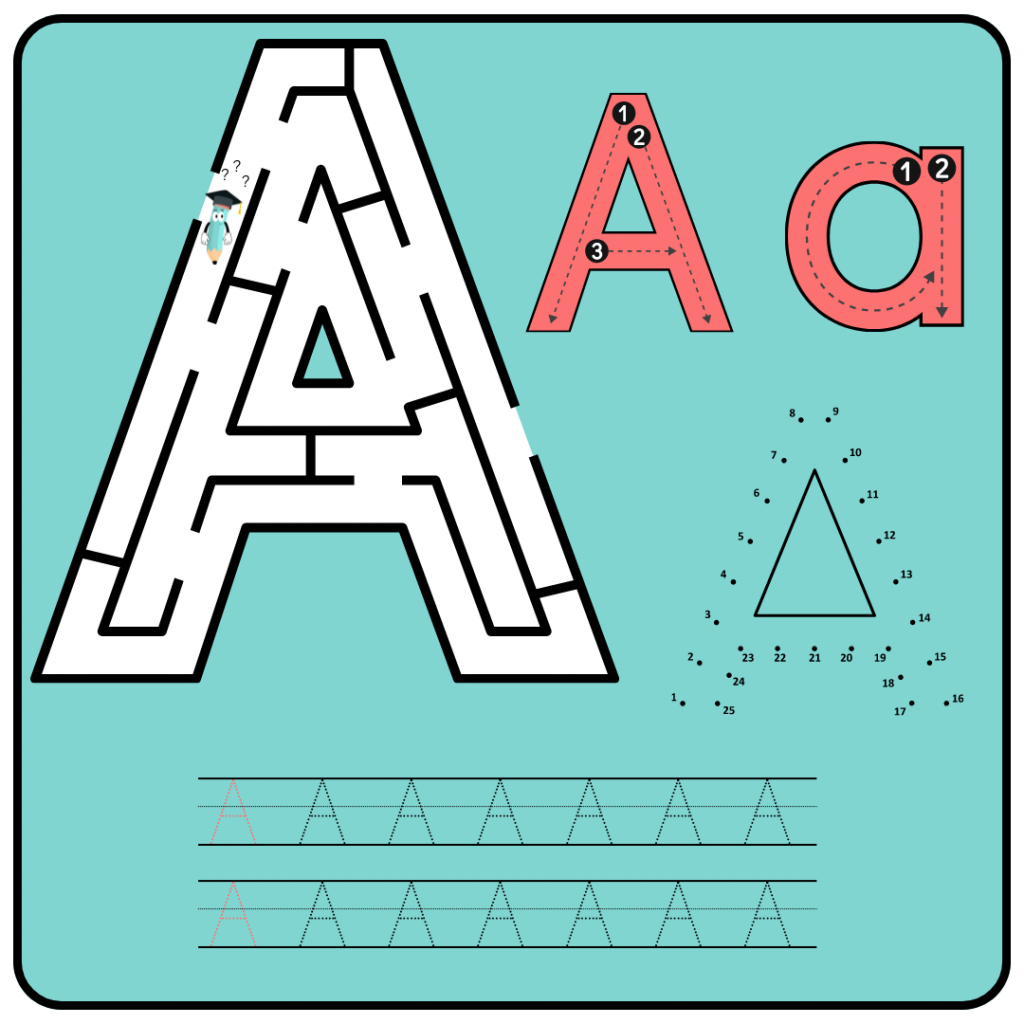As parents, we love watching our little ones grow and reach new milestones, like those first scribbles on a piece of paper. While it might seem like random doodling, these early marks are actually an important part of developing pen control, a critical skill that lays the foundation for handwriting. From gripping the pencil correctly to forming their first letters, learning pen control sets the stage for your child’s journey from scribbles to confident writing.
So, how can we support our children as they develop this crucial skill? Let’s dive into the importance of pen control and explore fun ways to help our kids master it!
Introducing Pens and Pencils Early
Children might not be able to grip a regular pen or pencil perfectly until they are about 4-5 years old. However, introducing them to writing tools at a younger age—around 3 years—comes with many benefits. Early exposure to pens and pencils helps children develop fine motor skills and get used to the act of holding and controlling a writing tool. At this stage, the goal is to let them explore with freedom, allowing them to strengthen their grip and improve their hand-eye coordination as they scribble and doodle.
Understanding the Stages of Pen Control
Pen control develops in stages as your child’s fine motor skills evolve. Knowing these stages can help you support them better:
- Palmar Grasp (1-1.5 years): At this stage, children hold the pen or crayon in their fist. It’s an exciting first step toward writing, even if it seems like they’re just scribbling. Encourage your child to doodle freely to strengthen their hand muscles.
- Pincer Grasp (1.5-2 years): As your child’s hand control improves, they’ll start using their thumb and fingers to hold the pen more precisely. This is a great time to introduce simple tracing activities, helping them refine their grip.
- Tripod Grasp (2-3 years): By this stage, children can hold the pen using the tips of their thumb, index, and middle fingers. This is the ideal way to hold a pen, which makes activities like tracing letters or numbers much easier.
How Tracing Supports Pen Control
Tracing is one of the best activities to help kids practice pen control. When children trace shapes, letters, or numbers, they’re learning how to follow a path with their pencil, building muscle memory and precision. This repetitive practice helps them gain control over their writing movements, making it easier for them to transition to freehand writing later on.
At Liam’s Classroom, we offer a variety of tracing worksheets designed specifically to help children improve their pen control. From alphabet tracing to number tracing, these resources provide guided practice, helping your child strengthen their writing skills while having fun!
Fun Ways to Practice Pen Control
There are plenty of engaging activities that can make learning pen control enjoyable for your child. Here are some of the best ones to try at home:
- Dot-to-Dot: Connecting the dots to create a picture is an exciting way to encourage your child to make controlled, deliberate pencil movements. This slow and steady activity helps them practice holding the pen correctly while focusing on making small, precise lines. The added bonus? They’ll love seeing the picture take shape as they complete the dots!
- Mazes: Drawing a line through a maze is both fun and challenging. It requires focus and careful hand-eye coordination, as your child will need to control their pencil to stay within the lines. Mazes help build fine motor skills while giving your child a sense of accomplishment when they complete the challenge.
- Tracing Shapes and Letters: Tracing is great for teaching children the shapes and lines that make up letters and numbers. You can start with simple geometric shapes and move on to more complex patterns as they improve. This activity not only builds pen control but also helps reinforce shape and letter recognition.
- Write & Wipe Activities: Reusable write-and-wipe sheets are perfect for repetitive practice. Your child can trace shapes, letters, or numbers, then wipe the sheet clean and try again. It’s a stress-free way to practice, allowing them to focus on improving without worrying about mistakes. Plus, the ability to “start fresh” keeps things fun and engaging!
- Coloring Books: Coloring inside the lines is another great way to improve pen control. It helps your child practice making deliberate movements with their pencil while also being creative. Start with simple, large pictures and gradually introduce more detailed images as their skills progress.
Each of these activities is designed to make practicing pen control fun while also helping your child develop essential fine motor skills and hand-eye coordination.

From Tracing to Writing
Once your child has developed good pen control through tracing, they’ll be ready to start writing on their own. At this stage, they’ll be able to form letters and numbers without needing to follow dotted lines or guides. But don’t worry—practice doesn’t stop here!
We recently launched two new tracing workbooks on Amazon to help with this transition:
- Upper Case Alphabet Tracing Workbook: This workbook focuses on helping your child master uppercase letters, providing clear instructions and ample space for practice.
- Lower Case Alphabet Tracing Workbook: A perfect companion to the uppercase workbook, this one helps your child develop the skills needed for writing lowercase letters with confidence.
Both workbooks are designed to make learning fun and engaging, offering structured yet playful practice to support your child’s writing journey.
What Is Your Child Learning Through Pen Control Activities?
When your child practices pen control, they’re learning more than just how to hold a pencil. These activities support a range of developmental milestones:
- Fine Motor Skills: Pen control strengthens the small muscles in your child’s hands, wrists, and fingers, which are crucial for tasks like writing, cutting, and even dressing themselves.
- Hand-Eye Coordination: Controlling a pen while watching the marks they make on paper helps develop hand-eye coordination, an essential skill for many activities, from sports to playing musical instruments.
- Pattern Recognition: Through tracing and drawing, children learn to recognize and recreate patterns like lines, circles, and shapes. This also helps with early math and writing skills.
- Cognitive Development: Holding a pen, scribbling, tracing, and trying again all stimulate your child’s brain. These activities require focus, problem-solving, and creativity, contributing to their overall cognitive growth.
- Emergent Writing: Early scribbles may not resemble letters, but they’re a child’s first steps toward writing. As they practice pen control, those random marks will gradually transform into recognizable letters, numbers, and words.
Through these pen control activities, your child is laying the groundwork for future writing success. It’s more than just fun—it’s building vital skills for school and life.
Building Confidence Through Practice
Pen control is not just about learning how to write, it’s also about building your child’s confidence. Every time your child completes a tracing worksheet or successfully writes a letter, they experience a sense of achievement. This boosts their self-esteem and motivates them to keep practicing. Celebrate these little victories along the way to help them stay positive and excited about learning!
With a little patience and the right tools, you’ll watch your child go from scribbles to sentences in no time!
Explore More Resources
Ready to help your child master pen control and handwriting? Visit our Free Learning Resource section to download a variety of tracing worksheets, and check out our educational videos on our YouTube channel for even more fun ways to learn.






